Grow Brussels Sprouts Indoors? Absolutely! Forget the sprawling garden and unpredictable weather. I’m here to tell you that you can cultivate these mini cabbages right in the comfort of your own home. For centuries, Brussels sprouts have been a staple in European cuisine, with roots tracing back to, you guessed it, Brussels, Belgium! But you don’t need a Belgian farm to enjoy their nutty, slightly bitter flavor.
Let’s face it, not everyone has the space or the time for a traditional outdoor garden. That’s where this DIY guide comes in. Imagine harvesting fresh, organic Brussels sprouts just steps from your kitchen. No more trips to the grocery store for questionable produce! Plus, growing your own food is incredibly rewarding and a fantastic way to connect with nature, even indoors. This article will provide you with simple, step-by-step instructions and insider tips to successfully grow Brussels sprouts indoors, regardless of your experience level. Get ready to transform your windowsill into a miniature sprout farm!
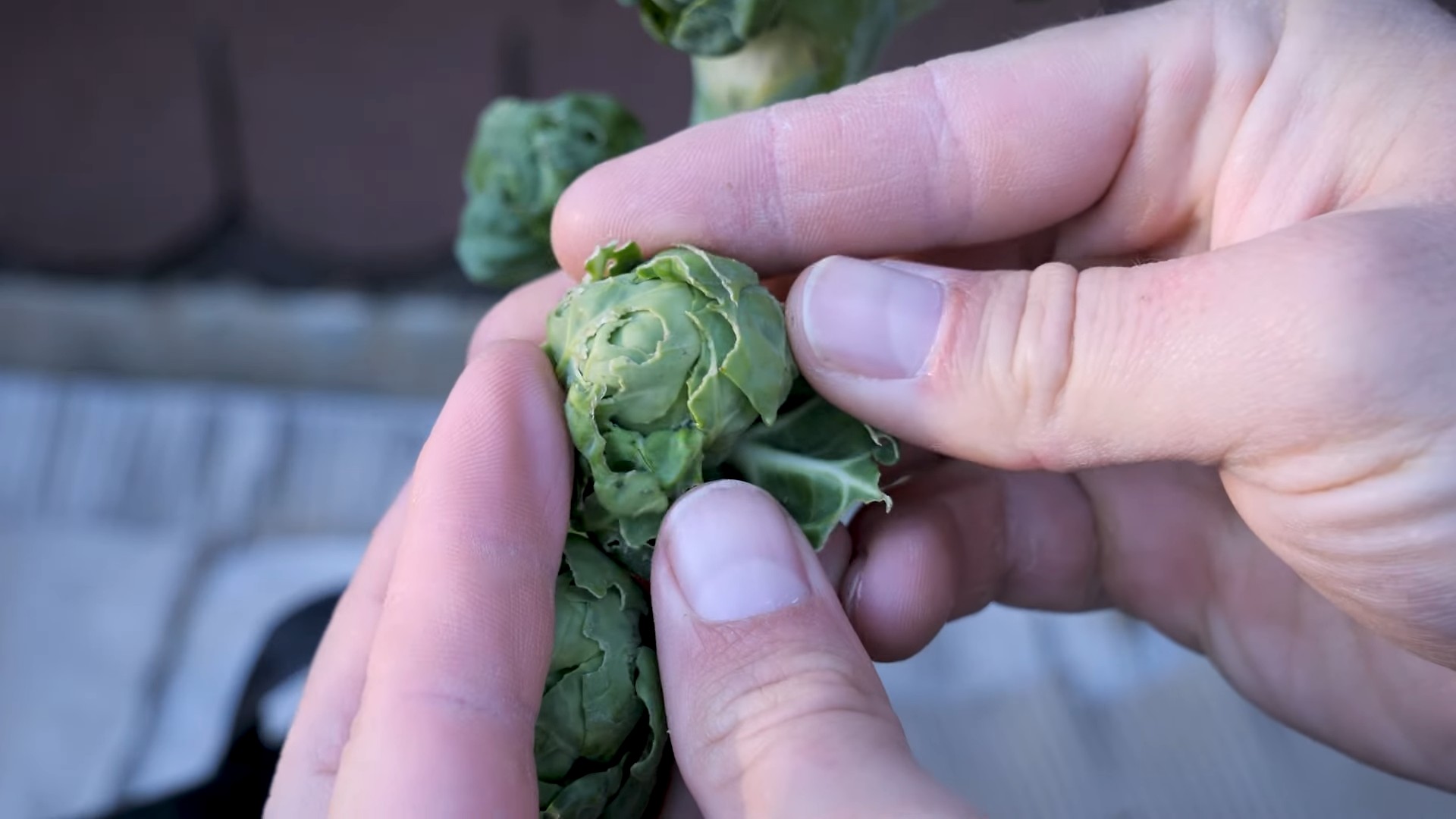
Growing Brussels Sprouts Indoors: A Comprehensive Guide
Okay, so you want to grow Brussels sprouts indoors? Awesome! It’s totally doable, and I’m here to walk you through the whole process. It might seem a little intimidating at first, but trust me, with a little patience and the right setup, you’ll be enjoying homegrown Brussels sprouts in no time. Let’s get started!
What You’ll Need
Before we dive into the nitty-gritty, let’s gather all the supplies you’ll need. Having everything on hand will make the process much smoother.
* **Brussels Sprouts Seeds:** Obviously! Choose a variety that’s known to do well in containers or shorter growing seasons. ‘Long Island Improved’ or ‘Jade Cross’ are good options.
* **Seed Starting Trays or Small Pots:** These are perfect for getting your seeds started.
* **Seed Starting Mix:** This is a light, sterile mix that’s ideal for delicate seedlings. Don’t use regular garden soil!
* **Larger Pots (at least 12 inches in diameter):** You’ll need these when you transplant your seedlings.
* **Potting Mix:** A good quality potting mix that drains well is essential.
* **Grow Lights:** Brussels sprouts need a lot of light, so grow lights are a must, especially during the shorter days of winter.
* **Fertilizer:** A balanced liquid fertilizer will help your plants thrive.
* **Watering Can or Spray Bottle:** For gentle watering.
* **Spray Bottle with Water:** For misting the seedlings to maintain humidity.
* **Small Fan:** To provide air circulation and prevent fungal diseases.
* **Optional: Heat Mat:** To speed up germination.
Phase 1: Starting Your Seeds
This is where the magic begins! Getting your seeds to sprout is the first crucial step.
1. **Prepare Your Seed Starting Trays:** Fill your seed starting trays or small pots with seed starting mix. Gently tap the trays to settle the mix.
2. **Sow the Seeds:** Make a small indentation (about ¼ inch deep) in the center of each cell or pot. Place 2-3 seeds in each indentation. This increases your chances of at least one seed germinating.
3. **Cover the Seeds:** Gently cover the seeds with more seed starting mix.
4. **Water Thoroughly:** Water the trays or pots gently using a watering can or spray bottle. You want the mix to be moist but not soggy.
5. **Provide Warmth:** Brussels sprouts seeds germinate best in warm temperatures (around 65-75°F). If you have a heat mat, place the trays on it. Otherwise, find a warm spot in your house.
6. **Maintain Humidity:** Cover the trays with a clear plastic dome or plastic wrap to help retain moisture. This creates a mini-greenhouse effect.
7. **Monitor Germination:** Keep an eye on your trays. Brussels sprouts seeds typically germinate in 5-10 days.
8. **Remove Cover:** Once the seedlings emerge, remove the plastic dome or plastic wrap.
9. **Provide Light:** Immediately place the seedlings under grow lights. Position the lights a few inches above the seedlings.
Phase 2: Caring for Your Seedlings
Now that you have tiny sprouts, it’s time to nurture them into strong, healthy seedlings.
1. **Watering:** Water your seedlings regularly, keeping the soil consistently moist but not waterlogged. Check the soil moisture by sticking your finger into the mix. If it feels dry to the touch, it’s time to water.
2. **Light:** Provide at least 14-16 hours of light per day. Adjust the height of the grow lights as the seedlings grow to keep them a few inches above the plants.
3. **Air Circulation:** Use a small fan to provide gentle air circulation. This helps prevent fungal diseases and strengthens the stems of the seedlings.
4. **Thinning:** Once the seedlings have their first true leaves (the second set of leaves that appear after the initial seed leaves), thin them out by snipping off the weaker seedlings at the soil line. Leave only the strongest seedling in each cell or pot.
5. **Fertilizing:** Start fertilizing your seedlings with a diluted liquid fertilizer (half strength) about 2 weeks after they emerge. Follow the instructions on the fertilizer label.
6. **Hardening Off:** Before transplanting your seedlings outdoors (if you plan to move them outside during warmer months), you’ll need to harden them off. This means gradually exposing them to outdoor conditions over a period of 1-2 weeks. Start by placing them outside for a few hours each day in a sheltered location, gradually increasing the amount of time they spend outdoors.
Phase 3: Transplanting and Growing
It’s time to move your seedlings into their permanent homes!
1. **Prepare Your Pots:** Fill your larger pots (at least 12 inches in diameter) with a good quality potting mix.
2. **Transplant the Seedlings:** Gently remove the seedlings from their seed starting trays or small pots. Be careful not to damage the roots.
3. **Planting Depth:** Plant the seedlings at the same depth they were growing in their previous containers.
4. **Water Thoroughly:** Water the newly transplanted seedlings thoroughly.
5. **Placement:** Place the pots under your grow lights.
6. **Fertilizing:** Continue fertilizing your Brussels sprouts plants every 2-3 weeks with a balanced liquid fertilizer.
7. **Watering:** Water regularly, keeping the soil consistently moist but not soggy.
8. **Support:** As your Brussels sprouts plants grow, they may need support. You can use stakes or tomato cages to help keep them upright.
9. **Pest Control:** Keep an eye out for pests such as aphids, cabbage worms, and whiteflies. If you spot any pests, you can try spraying them with insecticidal soap or neem oil.
10. **Temperature:** Brussels sprouts prefer cooler temperatures (60-70°F). If your indoor growing area is too warm, you may need to provide some cooling.
Phase 4: Harvesting Your Brussels Sprouts
The moment you’ve been waiting for!
1. **Harvest Time:** Brussels sprouts are typically ready to harvest about 90-100 days after planting.
2. **Check for Firmness:** The sprouts should be firm and tightly closed.
3. **Harvest from the Bottom Up:** Harvest the sprouts from the bottom of the plant first, as they mature first.
4. **Twist and Snap:** Twist the sprouts off the stem.
5. **Continue Harvesting:** Continue harvesting the sprouts as they mature, working your way up the plant.
6. **Remove Yellowing Leaves:** Remove any yellowing leaves from the plant to encourage further sprout development.
Troubleshooting
Even with the best care, you might encounter some challenges. Here are a few common problems and how to address them:
* **Leggy Seedlings:** This usually means your seedlings aren’t getting enough light. Lower your grow lights or provide more light.
* **Yellowing Leaves:** This could be a sign of overwatering, underwatering, or nutrient deficiency. Check the soil moisture and adjust your watering accordingly. Fertilize your plants if necessary.
* **Pests:** As mentioned earlier, keep an eye out for pests and treat them promptly with insecticidal soap or neem oil.
* **Sprouts Not Forming:** This could be due to a lack of light, improper fertilization, or temperatures that are too warm. Make sure your plants are getting enough light, fertilize them regularly, and try to keep the temperature in the ideal range.
Tips for Success
Here are a few extra tips to help you grow the best Brussels sprouts possible:
* **Choose the Right Variety:** Select a variety that’s known to do well in containers or shorter growing seasons.
* **Provide Plenty of Light:** Brussels sprouts need a lot of light, so make sure your grow lights are adequate.
* **Don’t Overwater:** Overwatering can lead to root rot. Allow the soil to dry out slightly between waterings.
* **Fertilize Regularly:** Brussels sprouts are heavy feeders, so fertilize them regularly with a balanced liquid fertilizer.
* **Be Patient:** Growing Brussels sprouts takes time, so be patient and don’t get discouraged if you don’t see results immediately.
Growing Brussels sprouts indoors can be a rewarding experience. With a little effort and attention, you can enjoy fresh, homegrown Brussels sprouts even if you don’t have a garden. Good luck, and happy growing!
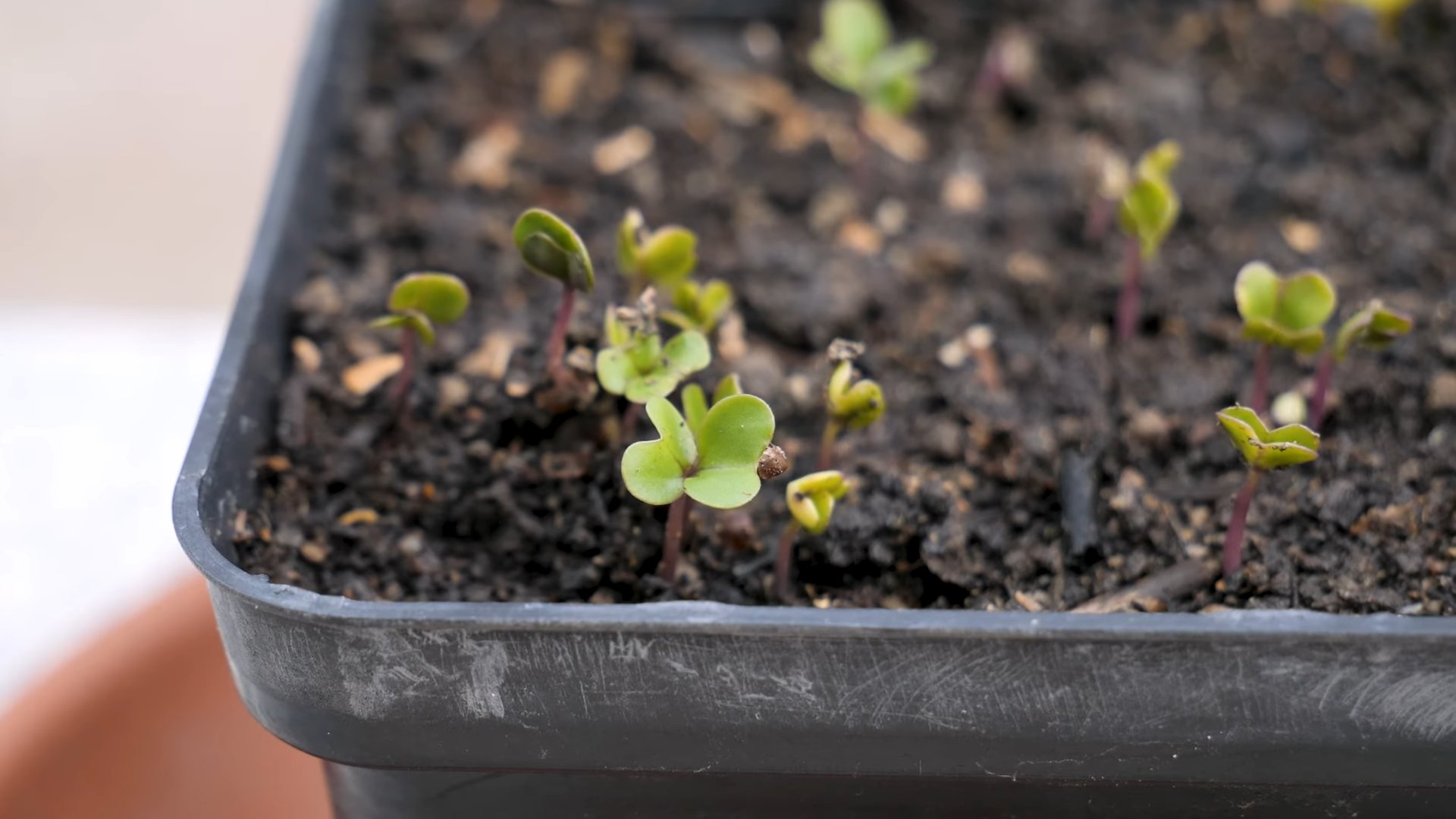
Conclusion
So, there you have it! Growing Brussels sprouts indoors might seem like a daunting task, but with a little patience and the right approach, you can enjoy fresh, homegrown sprouts even when the weather outside is frightful. This DIY trick isn’t just about saving money; it’s about connecting with your food, understanding the growing process, and experiencing the satisfaction of nurturing something from seed to table.
Why is this a must-try? Because it offers a unique opportunity to extend your growing season, control the environment your sprouts are exposed to, and enjoy a continuous supply of these nutritious vegetables. Imagine the delight of harvesting your own Brussels sprouts in the dead of winter, adding a vibrant, fresh element to your meals when most gardens are dormant.
But don’t stop there! Experiment with different varieties of Brussels sprouts to find your favorite flavor profile. Try growing them in different types of containers to see which works best for your space and growing conditions. You could even explore companion planting within your indoor setup, adding herbs like rosemary or thyme to deter pests and enhance the flavor of your sprouts.
Consider using grow lights with different spectrums to see how they affect the growth and development of your plants. Some growers swear by specific light combinations for optimal sprout formation. You can also adjust the nutrient solution you use, experimenting with different ratios of nitrogen, phosphorus, and potassium to find the perfect balance for your indoor garden.
Remember, the key to success with this DIY trick is observation and adaptation. Pay close attention to your plants, monitor their growth, and adjust your approach as needed. Don’t be afraid to experiment and learn from your mistakes. Every gardener, even experienced ones, faces challenges along the way.
We wholeheartedly encourage you to give growing Brussels sprouts indoors a try. It’s a rewarding experience that will not only provide you with fresh, delicious vegetables but also deepen your appreciation for the natural world. And most importantly, have fun with it! Gardening should be enjoyable, so relax, experiment, and savor the process.
Once you’ve embarked on your indoor Brussels sprouts adventure, we’d love to hear about your experience! Share your tips, tricks, and challenges in the comments below. Let’s create a community of indoor gardeners who are passionate about growing their own food and sharing their knowledge with others. Your insights could be invaluable to someone just starting out, and together, we can all learn and grow. So, get your seeds, prepare your soil, and get ready to enjoy the satisfaction of harvesting your own homegrown Brussels sprouts, all thanks to this simple yet effective DIY trick.
Frequently Asked Questions (FAQ)
Q: What are the best Brussels sprouts varieties to grow indoors?
A: While many varieties can be grown indoors, some tend to be more compact and suitable for container gardening. ‘Jade Cross’ is a popular choice due to its relatively small size and good yield. ‘Long Island Improved’ is another reliable option. Consider also ‘Redarling’ for a unique color and flavor. Research the mature size of the variety before planting to ensure it will fit comfortably in your indoor space.
Q: How much light do Brussels sprouts need when grown indoors?
A: Brussels sprouts are sun-loving plants and require at least 6-8 hours of direct sunlight per day. If you don’t have a south-facing window that provides sufficient light, you’ll need to supplement with grow lights. LED grow lights are a great option as they are energy-efficient and provide the full spectrum of light that plants need. Position the lights a few inches above the plants and adjust as they grow.
Q: What type of soil is best for growing Brussels sprouts indoors?
A: Brussels sprouts prefer well-draining, fertile soil with a slightly acidic to neutral pH (around 6.0-7.0). A good potting mix specifically formulated for vegetables is ideal. You can also create your own mix by combining equal parts of potting soil, compost, and perlite or vermiculite. The compost will provide essential nutrients, while the perlite or vermiculite will improve drainage and aeration.
Q: How often should I water my indoor Brussels sprouts?
A: Water your Brussels sprouts regularly, keeping the soil consistently moist but not waterlogged. Check the soil moisture by sticking your finger about an inch deep. If it feels dry, it’s time to water. Avoid overwatering, as this can lead to root rot. Ensure your containers have drainage holes to allow excess water to escape.
Q: How do I fertilize my indoor Brussels sprouts?
A: Brussels sprouts are heavy feeders and require regular fertilization. Start fertilizing about two weeks after transplanting the seedlings. Use a balanced liquid fertilizer diluted to half strength every two weeks. As the plants mature and start to form sprouts, you can switch to a fertilizer higher in phosphorus and potassium to promote sprout development.
Q: How long does it take to grow Brussels sprouts indoors?
A: From seed to harvest, Brussels sprouts typically take around 80-100 days. The exact time will depend on the variety, growing conditions, and your climate. Be patient and monitor your plants closely. The sprouts are ready to harvest when they are firm and about 1-2 inches in diameter.
Q: What are some common pests and diseases that affect indoor Brussels sprouts?
A: Common pests that can affect indoor Brussels sprouts include aphids, spider mites, and whiteflies. Regularly inspect your plants for signs of infestation and take action promptly. You can use insecticidal soap or neem oil to control these pests. Diseases like powdery mildew and downy mildew can also occur in humid conditions. Ensure good air circulation and avoid overhead watering to prevent these diseases.
Q: How do I harvest Brussels sprouts?
A: Harvest the sprouts from the bottom of the plant upwards as they mature. Twist or cut them off the stem when they are firm and about 1-2 inches in diameter. The lower leaves may turn yellow as the sprouts mature; you can remove these to improve air circulation.
Q: Can I grow Brussels sprouts indoors year-round?
A: Yes, with proper lighting and temperature control, you can grow Brussels sprouts indoors year-round. However, you may need to adjust your growing schedule to account for the shorter days of winter. Using grow lights and maintaining a consistent temperature will help ensure a continuous harvest.
Q: What temperature is ideal for growing Brussels sprouts indoors?
A: Brussels sprouts prefer cooler temperatures, ideally between 60-70°F (15-21°C). Avoid exposing them to temperatures above 80°F (27°C), as this can inhibit sprout formation. If your indoor environment is too warm, you can try moving the plants to a cooler location or using a fan to improve air circulation.
Q: How do I encourage sprout formation on my indoor Brussels sprouts?
A: To encourage sprout formation, ensure your plants are receiving adequate light, nutrients, and water. You can also try pinching off the top of the plant when it reaches about 18-24 inches tall. This will encourage the plant to focus its energy on producing sprouts rather than growing taller.
Q: Can I transplant Brussels sprouts seedlings that I started outdoors into containers for indoor growing?
A: Yes, you can transplant Brussels sprouts seedlings from outdoors into containers for indoor growing. However, it’s important to do this carefully to minimize root disturbance. Choose healthy seedlings that are about 4-6 inches tall and gently dig them up, taking care to preserve as much of the root system as possible. Transplant them into containers filled with well-draining potting mix and water thoroughly. Allow them to acclimate to their new environment gradually.


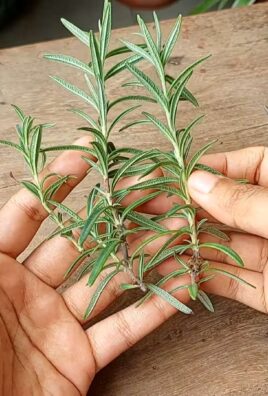
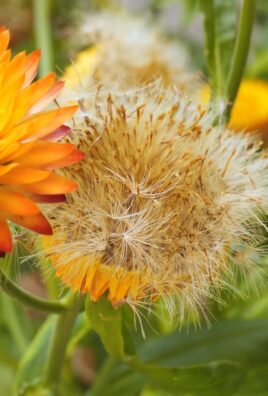
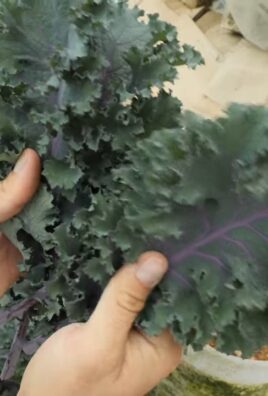
Leave a Comment